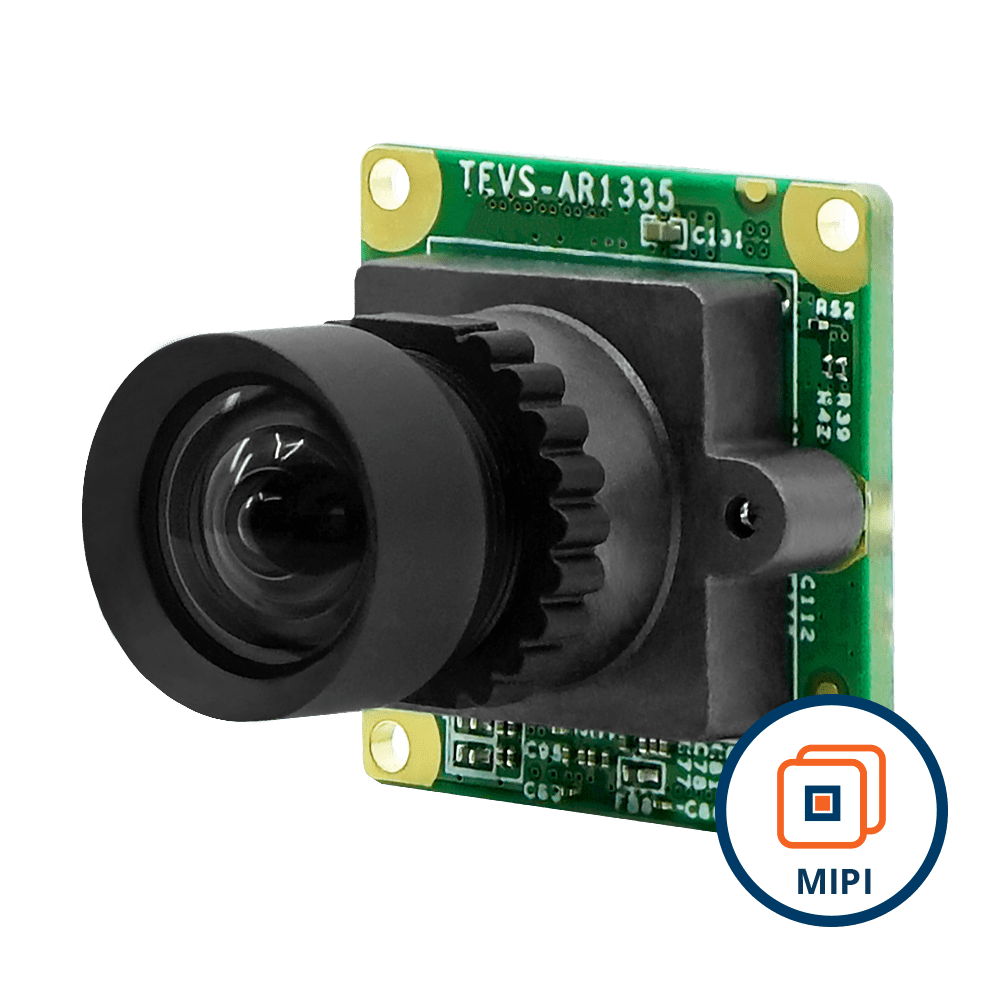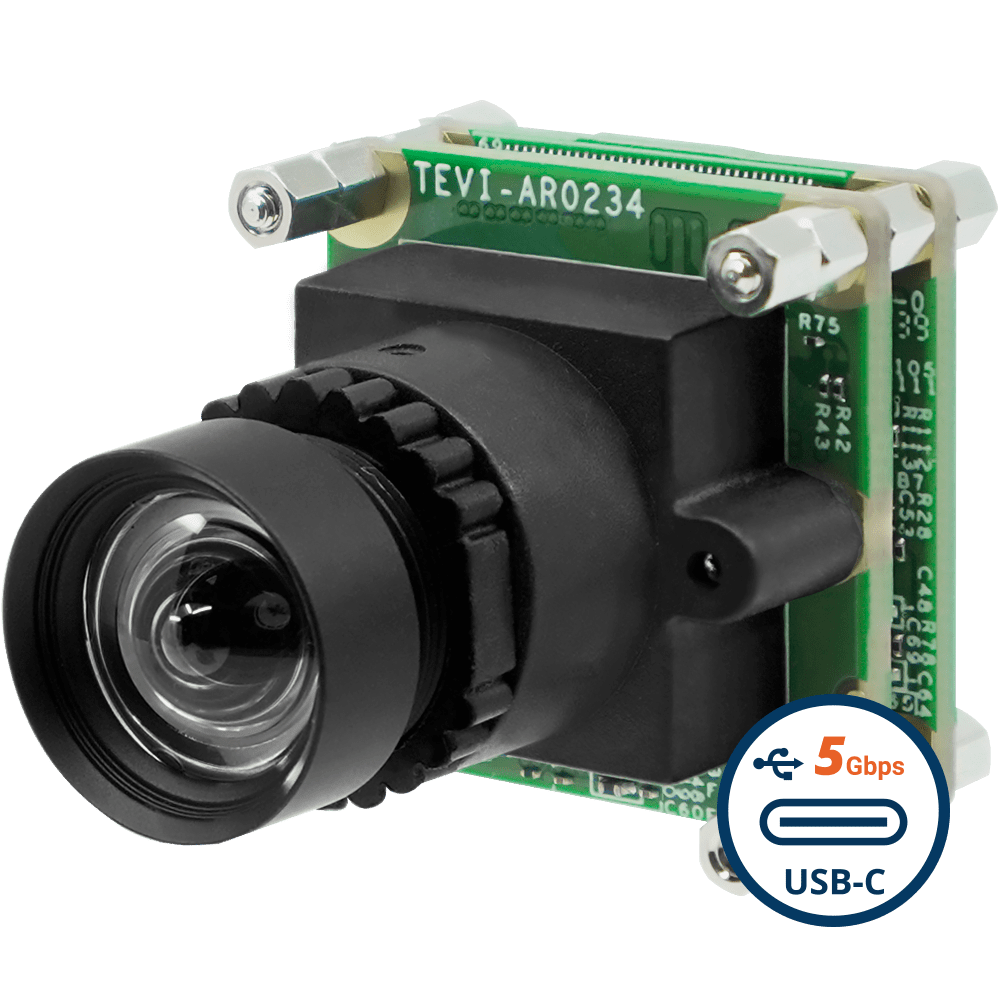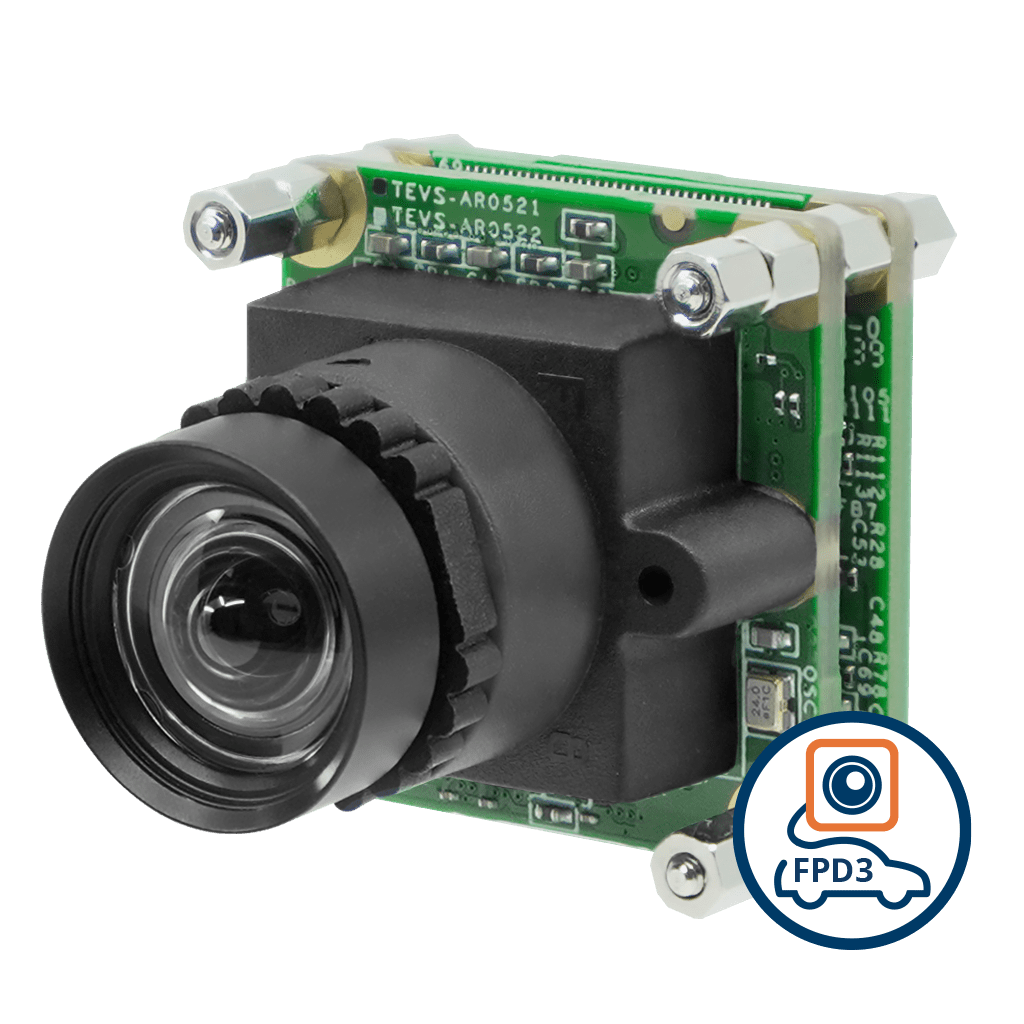Choosing the right sensor for an embedded vision system is an important decision that greatly affects the system’s overall performance and capabilities. The sensor is a vital camera component; its quality directly impacts the images it captures. In embedded vision systems, where integration with other electronic components and real-time processing is necessary, selecting the right sensor ensures high-quality images and influences system design and power usage.
Embedded vision systems have various uses, ranging from industrial automation and medical imaging to autonomous vehicles and robots. These applications have specific needs for resolution, speed, sensitivity, and environmental conditions. The right sensor will help you achieve each application’s desired performance and functionality.
In this article, we explore various concepts related to an image sensor and discuss the factors you need to consider while choosing one for your embedded vision system.
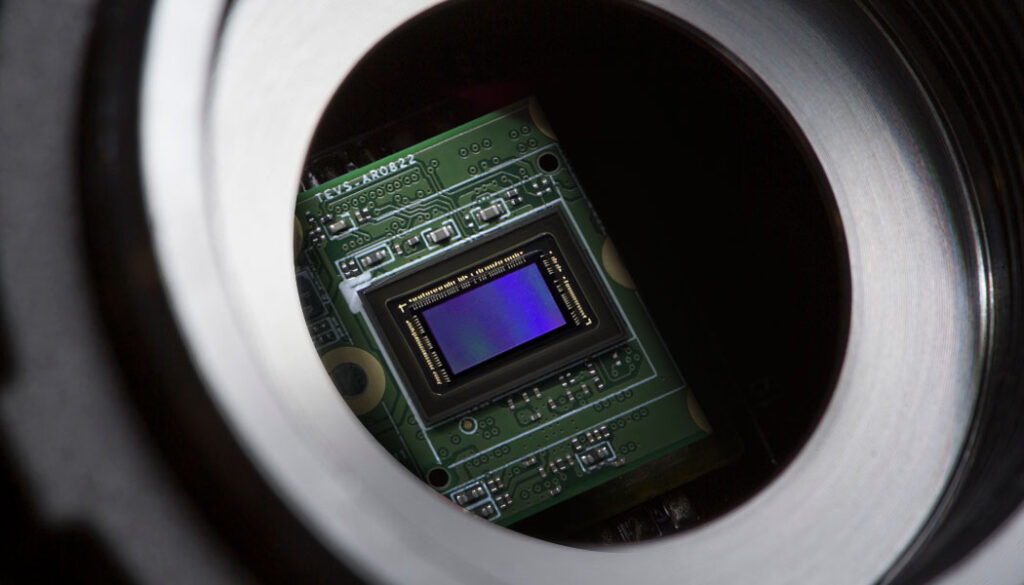
CMOS sensor
An image sensor and its relevance in embedded cameras
The sensor in an embedded vision system converts light into electrical signals, acting as the system’s eye. Its characteristics, such as pixel size, type (CCD or CMOS), dynamic range, and sensitivity, directly affect the system’s ability to capture images under various conditions and perform tasks like object detection, pattern recognition, and motion analysis.
In addition to its features, a sensor’s compatibility with the other components (for example, the lens, and the attached processor interface) also matters to ensure optimal performance. Sensors also need to have a long life, given that the use case for most embedded devices is always on, always running. They may also need to operate under adverse weather conditions so that the vision system functions without interruption during its intended lifetime.
CMOS vs. CCD sensors
CMOS (Complementary Metal-Oxide-Semiconductor) and CCD (Charge-Coupled Device) are the primary sensor types in embedded vision systems.
CMOS sensors
CMOS sensors are popular for embedded vision applications due to their low power usage and cost-effectiveness. Made using standard semiconductor techniques enables the inclusion of readout circuits, amplifiers, and analog-to-digital converters (ADCs) directly onto the sensor chip, resulting in faster readout speeds and smaller system sizes. Additionally, CMOS sensors are highly regarded for their impressive noise reduction abilities and ability to easily handle high dynamic range lighting situations.
CCD sensors
CCD sensors are top performers when it comes to image quality and light sensitivity. They utilize a charge transfer process that maintains signal integrity and produces high-quality images with minimal noise, making them ideal for applications where image quality is crucial, such as scientific imaging. Offsetting this is their higher power consumption and manufacturing costs, which may not make them the most practical choice for battery-powered or budget-conscious embedded vision systems.
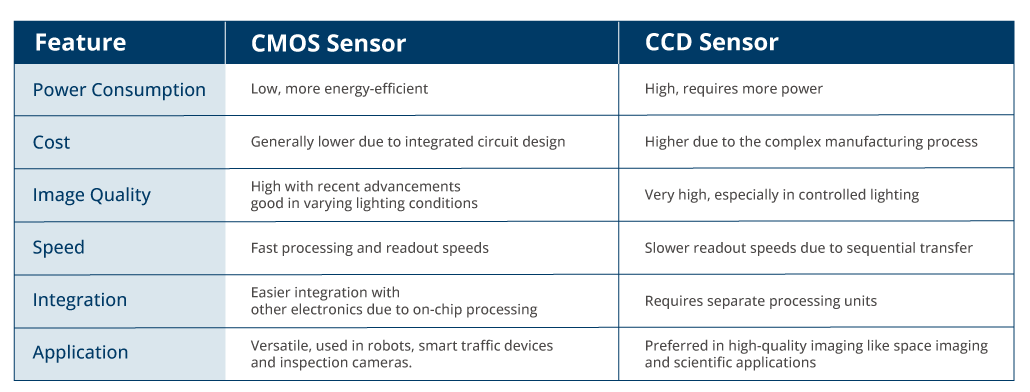
Factors to consider while choosing a sensor
Choosing the right sensor for an embedded vision system involves considering the following factors:
- Resolution
- Shutter type
- Sensor size
- Sensor-lens matching
- ISP (Image Signal Processor)
Let’s dive in.
Resolution
When it comes to image quality, resolution is a key factor to consider; however, it must also be balanced with the system’s capabilities and requirements. A higher resolution can improve detail but may affect the frame rate and require more processing power and bandwidth. It’s important to select the appropriate resolution for your intended use, whether capturing fine details in industrial inspection or providing a broader view for surveillance purposes.
Modern embedded vision systems with high-speed interfaces like MIPI and FPD-Link III can capture images in extremely high resolutions (4K and above). In addition, with host processors that come with an AI power of up to 275 TOPS, achieving high resolution and frame rate is very much possible today.
Shutter type
When choosing a shutter type for your imaging needs, there are two main options to consider: global shutters and rolling shutters. Global shutters capture the entire frame simultaneously, making them ideal for capturing fast-moving objects without distortion. On the other hand, rolling shutters read out the image data line by line and tend to be more cost-effective, making them suitable primarily for stationary scenes. Ultimately, every application is unique and requires careful analysis before determining which shutter type suits your unique needs.
Also read: Global Shutter vs. Rolling Shutter in Embedded Vision
Sensor and pixel size
When it comes to camera sensors, bigger isn’t always better. While larger sensors can capture more light and perform well in low-light situations, smaller pixels on the same-sized sensor can produce higher-resolution images with finer details. A sensor size of 1/1.2″ or above is generally considered large, but there is no strict definition for what makes a “large” sensor. The pixel size also plays a crucial role – larger pixels are better for low-light performance, while smaller pixels are ideal for capturing small objects or fine details.
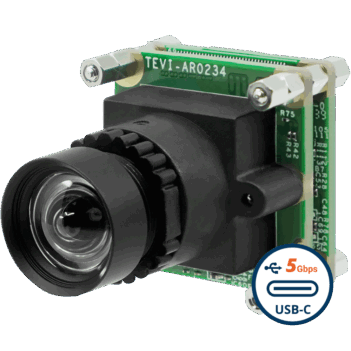
USB3 Type C PCB Board Level camera with onsemi AR0234 2MP Full-HD Global Shutter with Onboard ISP and S-mount Lens with IR-Cut Filter
UVCI-AR0234-SL
- onsemi AR0234 2.3MP Global Shutter Sensor
- S-Mount for Interchangeable Lenses
- UVC USB Type-C 5 Gbps Connector
- Plug & Play with Windows & Linux OS
- VizionViewer™ configuration utility
- VizionSDK for custom development
Sensor-lens matching
When choosing a camera, it is important to consider the compatibility of sensor and lens sizes to achieve the best image quality. Usually, the sensor is selected first based on its performance and image quality, and then a lens that matches its size and capabilities is chosen.
Following are the lens parameters you should consider while doing sensor-lens matching:
- Focal length: Determines the lens’s angle of view and magnification. It should be chosen based on the desired field of view and the sensor’s size.
- f-number: Indicates the lens’s aperture size, affecting the amount of light reaching the sensor.
- Image circle size: The lens projects an image in a circular shape. This circle should be large enough to cover the entire sensor.
- Back focal distance: The distance from the lens’s rear element to the image sensor. It’s crucial for ensuring compatibility with camera housings and mounts.
ISP (Image Signal Processor)
When choosing a sensor for your vision system, it is important to consider how the ISP (Image Signal Processor) will be integrated. Some sensor manufacturers offer ISPs that can easily integrate with the sensor, while others may require an external ISP. In some cases, default ISPs provided by host processor manufacturers may not have specialized features like high dynamic range, so it is important to carefully consider your integration needs when selecting a sensor. This can help reduce integration efforts and ensure optimal performance for your vision system.
Other important components of a vision system
he sensor is probably the most important component of a camera. However, the choice of other components also significantly impacts image quality. Let’s have a quick look at them in this section.
Lens and lens mount
The lens focuses light onto the sensor, affecting the field of view and image quality. Lens mounts vary in size and type, impacting compatibility and ease of lens changes. Quality and specifications must align with system requirements for optimal performance. S Mount, C Mount, and CS Mount are the 3 most popular mount types used in embedded vision cameras.
Interface
The method of data transmission between the camera and the host system is crucial for speed and reliability. Interfaces like USB, FPD-Link III, and MIPI cater to data rate needs and integration complexities by offering a maximum bandwidth of up to 10 Gbps. The choice of the interface in an embedded vision system depends on various factors such as bandwidth requirements, transmission distance, and host processor compatibility.
Host processor
A host processor is the main computing unit of a vision system that processes images and executes vision algorithms. Its capabilities determine the system’s performance in image analysis, processing speed, and executing complex algorithms. Selection depends on the computational intensity of the application and real-time processing needs. Some of the popular embedded processing platforms include:
- NXP i.MX series
- TI TDA4VM
- NVIDIA Jetson
Wrapping up
When designing an embedded vision system, selecting the appropriate sensor is crucial as it significantly impacts image quality and overall performance. TechNexion offers a variety of sensors in its product portfolio, each with different specifications to cater to a wide range of applications, such as industrial automation, smart city, and advanced robotics. Have a look at the below image to get a view of our complete sensor portfolio.
Our camera solutions with these sensors come in different variants with various interfaces, lens mounts, and processor options. Visit the embedded vision cameras page to learn more about our camera portfolio.
Related Products
Get a Quote
Fill out the details below and one of our representatives will contact you shortly.

